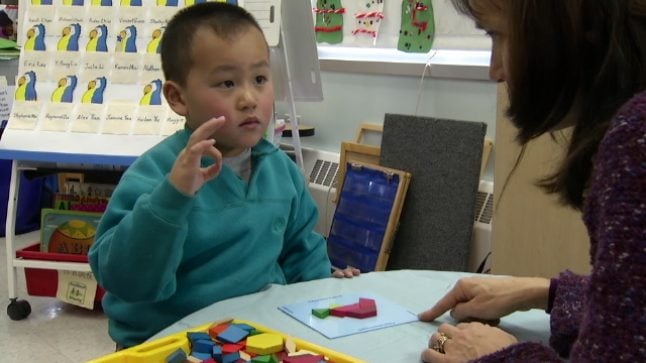Series: About the Collaborative
Collaboration with Kentucky Center for Mathematics Yields Mathematical Development
December 30, 2014
Collaboration with the Kentucky Center for Mathematics has reinforced mathematical development for students throughout Kentucky.
- Age/Grade Level: Pre-K, Kindergarten, 1st Grade
Series: About Early Math December 29, 2014
The Role of Play in Pre-K Development
This New York Times article discusses the growing lack of play time in pre-k development and classrooms and its implications. "As they play, children develop vital cognitive, linguistic, social and emotional skills. They make discoveries,…
- Age/Grade Level: Infants, Toddlers, Pre-K, Kindergarten
- Tags Play
Series: Hear from the Experts December 22, 2014
Math Curriculum in Preschool Can Have Long-Term Effects
Math achievement in preschool been shown to be an accurate predictor of future progress not only in math, but in other academic areas as well. "We want kids running around the classroom and bumping into…
- Age/Grade Level: Pre-K
- Tags Play, Doug Clements
Series: Focus on the Lesson December 17, 2014
Shoe Graph
In this video, students brainstorm ways to sort their shoes. Later, they graphically organize the data from the sets they created.
- Topic: Data Analysis
- Age/Grade Level: Pre-K, Kindergarten
- Tags English Language Learner, Graphing, Shoes, Seasonal, Books, Whose Shoes?, Stephen R. Swinburne
Series: About Early Math December 1, 2014
Preschool Math Curriculum Needs Plenty of Time for Play
The most successful preschool classrooms seem to be those that provide students plenty of time to play, with oversight from strong teachers who can take advantage of the inherent learning opportunities there within.
Series: About the Collaborative November 12, 2014
Collaborative Offers Ideas for Number Sense, Three Little Pigs at NAEYC Conference
The Early Math Collaborative contributed two presentations at the annual National Association for the Education of Young Children (NAEYC) Conference and Expo, which took place November 5-8, 2014 in Dallas, Texas.
- Tags NAEYC
Series: About Early Math November 10, 2014
Reflections on Early Childhood Learning at 2014 NAEYC Conference
This video reveals some of the major concepts discussed at the 2014 NAEYC Conference.
- Tags NAEYC
Series: About Early Math November 10, 2014
Math Ideas Abound at 2014 NAEYC Conference
"For too many adults, math is like this dirty diaper that we hold away or get rid of as quickly as possible."
- Tags NAEYC
Series: Focus on the Child November 3, 2014
Composing Shapes through Gesture with Child 10
This pre-k English Language Learner uses gesture to articulate math ideas while putting together a shape puzzle.
- Topic: Shape
- Age/Grade Level: Pre-K, Kindergarten
- Tags English Language Learner, Gesture, Correction, Child 10, Grit
Series: Hear from the Experts October 31, 2014
Got Grit? Angela Lee Duckworth on Educational Perseverance
In this TED Talk, you’ll hear from Angela Lee Duckworth, the psychologist who coined the term "grit." She discusses her research and offers some brief ideas on how to motivate kids to be gritty.
- Age/Grade Level: Adult Learners, Pre-K, Kindergarten, 1st Grade, 2nd Grade, 3rd Grade
- Tags Correction, Grit
Do the math.
Free videos.
Free newsletter packed with ideas.
Free professional learning modules.









